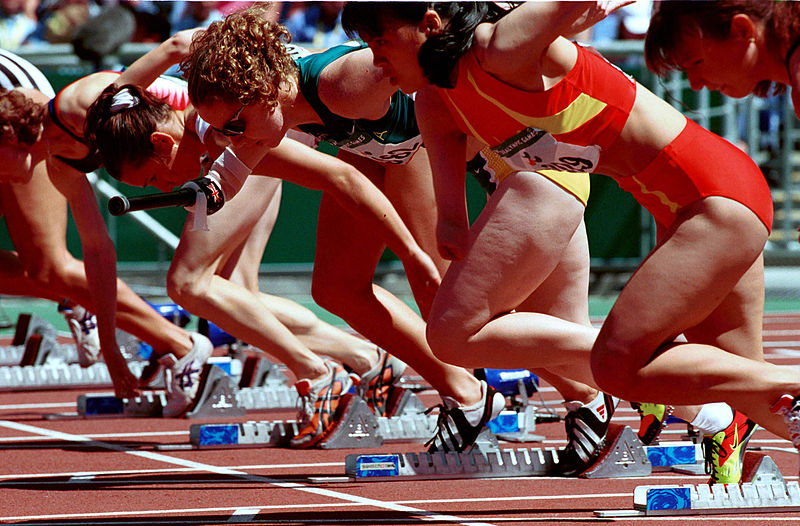Note that your final mark will not be saved in the system.
3.1.2.5 Memory models (efficiency of information processing) Typeit
Type the correct answers into the spaces. Fill all the spaces before clicking ‘Check Answers!’

Response time is an important skill in many sports. For example, a better response time would offer a sprinter a quicker sprint start in a race or improve a hockey goalkeeper's chances of saving a close range shot. It comprises the time taken to react to a stimulus and the time taken to complete the subsequent movement. As such, it is summarised by the following equation:
response time = +
There are two types of reaction time:
| reaction time | the response when faced with a single stimulus |
| reaction time | when an individual is faced with multiple stimuli and must respond to one of these |
There are numerous factors affecting response time:
- law suggests that the time taken to respond to a stimulus increases as the number of stimuli that require a decision increases.
- The (PRP) states that response time is delayed when faced with multiple stimuli. This suggests that the response to a second stimulus is delayed as a direct result of the first stimulus being processed. For example, a wicketkeeper may first process the stimulus of the batsman leaving their crease, but as they are processing this, the response time for them to catch the incoming ball is delayed, causing the wicketkeeper to ‘freeze’ for a second, meaning they are less likely to make a clean catch.
- The hypothesis suggests that when multiple stimuli are received, the brain can process only a single stimulus at a time. Once the first stimulus has been fully processed, the second stimulus from the environment can then be processed, and so on. This can lead to a concept, with the later stimuli piling up before they are able to be processed.
Due to the crucial nature of having a fast response time across such a wide range of sports, it is important to understand how this can be improved. Below are methods to help improve response time:
- Regular can help to improve anticipation and reaction to stimuli
- Completing drills to improve – as response time incorporates movement time, the quicker an athlete can move, the quicker their response
- Improving helps to filter out irrelevant stimuli which interfere with the most relevant stimuli
- Mental can help to focus the athlete’s attention to the task at hand, so they are mentally prepared to respond to a stimulus
- Strengthening the bond can help an athlete improve their response times as they know when and how to respond to specific situations naturally
- Improved fitness to improve reaction time – specific fitness components (e.g. agility, speed) can be improved to decrease the physical response time to a stimulus
Another way to improve response time is through anticipation. This involves prejudging a stimulus before it is present. It is associated with more experienced athletes as they are able to pick up cues from the environment more easily. There are two types of anticipation:
| is concerned with predicting what is going to happen, e.g. a defender in football who is able to read a pass and intercept the ball | |
| is concerned with predicting when an event is going to happen, e.g. a rugby player who anticipates when the opposition scrum half is going to make a snipe for the try line |